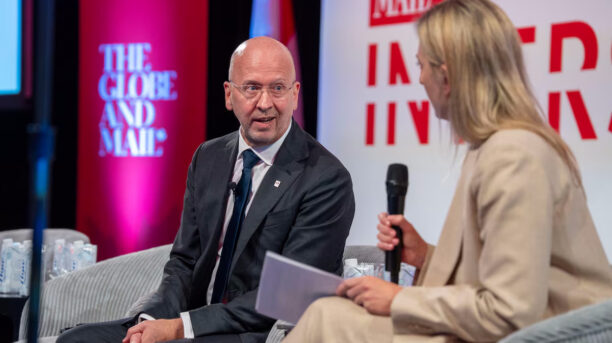Jill Priestman, the Director of Workplace Strategy at Bennett Design Associates Inc., argues that understanding culture and employee expectations is essential when reimagining the workspace.
“In all my years as a workplace strategist, there has never been a time quite as fascinating as right now,” says Priestman. “The dynamic interplay between employees, employers, and the workspace has been dramatically reshaped, sparking a wave of discussions on how organizations should reimagine their workspaces for future ways of working.”
It has become blatantly clear in the past few years that having a strong, amplified and transparent company culture is necessary. By considering the corporate culture, the business strategy and the employee needs through a comprehensive transformational change, organizations are realizing a new level of employee commitment.
If companies are going to make a transformational change that is embraced throughout the organization, they must be willing to hear and consider what employees are concerned with and care about, before that change happens. That input will be critical in shaping the holistic business planning direction and the resulting success of that strategy.

What the Bennett Workplace Strategy team knows from its work over the past few years is that it’s imperative for employees to have connections within their organization to build trust, create a sense of belonging, and to align like-minded values to support a strong corporate culture. To do this, they must be heard so that their input can shape the narrative and policies for the return to the office, guaranteeing that the physical space will be successfully utilized, resulting with employees who can be productive, efficient, and engaged.
Remote, hybrid or onsite?
Finding solutions to these challenges is only possible by understanding employer expectations and the employee experience. Workplace Strategy has never had a more vital role than it has today, and the path to creating harmony, inspiration and engagement in the workplace begins with asking the right questions throughout all levels of the people within that specific organization. One size does not fit all, and fully remote, hybrid or fully onsite are not mutually inclusive or exclusive for many organizations.
The Bennett Design team has identified several emerging trends in workplace strategy thinking that are shaping the future of workspaces. These trends, which are foundational in its proprietary d.i.g. Workplace Strategy, are proving to be powerful tools in collecting the significant data that influences and informs an organization’s strategic space direction with defensible accuracy. Six key indicating trends are:
- Analyzing Industry Benchmarks
In the ever-evolving workplace landscape, many organizations are turning to industry benchmarks to gain clarity. Decoding these benchmarks is akin to piecing together a dynamic puzzle, each piece crucial for providing reference points to help steer an organization’s direction towards their unique and optimal workspace strategy.
- Evaluating Space Utilization
Space utilization extends beyond mere occupancy. It’s about understanding how every area of the workspace is being used and why. Deciphering these subtleties allows for a more tailored and efficient design that resonates with the evolving needs of the workforce.
- Fostering a People-Centric Workplace
The rise of roles such as Chief People Officer (CPO) signifies a pivotal shift towards a people-centric leadership paradigm. This move is reshaping the very fabric of organizational dynamics, with the focus squarely on managing the intricate needs of the people who will be working together.
- Enhancing Organizational Alignment
Improving organizational alignment involves addressing the widening gap between employees and employers in values, management practices, culture, and the envisioned future of work. Bridging this gap entails not only a rigorous commitment to communication, but reimagining physical spaces by orchestrating a comprehensive workplace transformation that encompasses behavior, culture, and the organizational fabric itself.
- Navigating Technological Impact
Negotiating technological change has become a major factor in workplace strategy. Organizations need a holistic approach that finds the sweet spot between technological innovation, cost-effectiveness, adaptability, and a reimagination of suitable spaces to support the elevated and seamless tech experience for both on-site and remote participants.
- Managing Change Effectively
Change management has stepped into the spotlight recently. It involves the systematic application of a structured process and a suite of tools aimed at effectively leading the human aspect of change, ensuring the success of desired outcomes.

Priestman notes that the research indicates that hybrid work will be with us for the foreseeable future and, while we know that there isn’t a single solution for navigating the future of the workplace, having a comprehensive strategy that aligns the employees’ values with the leadership’s vision is the place to start the conversation.
She concludes: “A strong workplace strategy will give you the data-driven roadmap for the way forward and each space layout, process, and finished product will be as unique as the people that make up the organization. The value of employee input in shaping workplace strategy is undeniable. By including the employee voice, organizations can successfully create an engaging, inspiring, and productive workspace that supports the people who drive our businesses forward.”
Jill Priestman is the Director of Workplace Strategy at Bennett Design. Bennett Design is Canada’s largest independent interior design firm and is wholly Canadian and woman-owned.
Bennett Design is a sponsor of the Institute of Canadian Agencies. Report on Marketing is where leading Canadian agencies showcase their insights, cutting-edge research and client successes. The Report on Marketing provides a valuable source of thought leadership for Canadian marketers to draw inspiration from. Find more articles like this at the Report on Marketing.
See all Ideas & Insights




